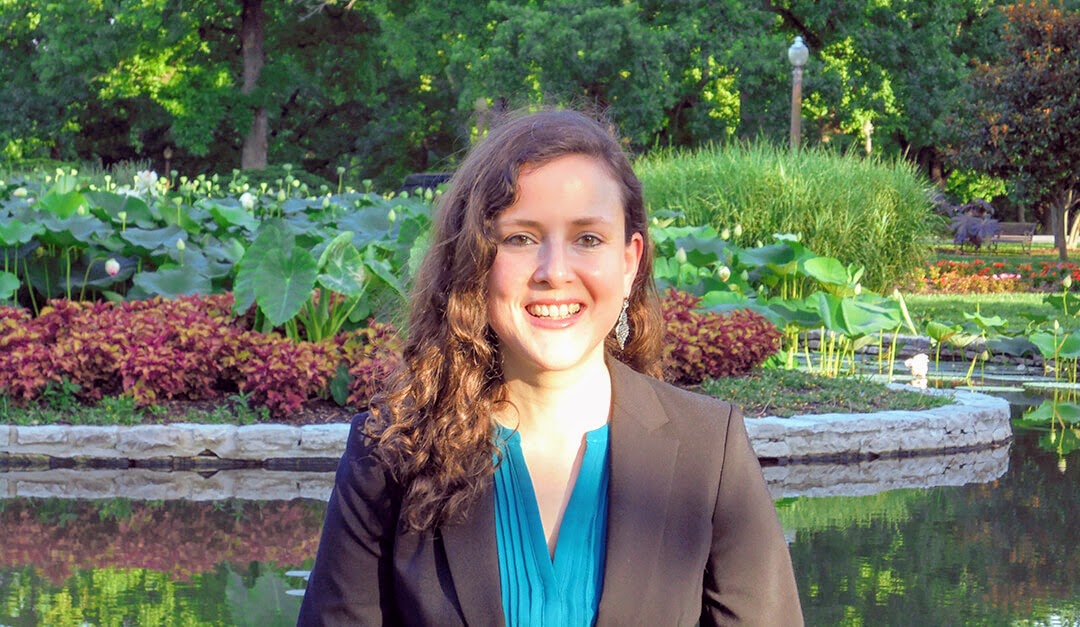by Natalie Bruckner. Photo submitted. Originally published in the Fall 2021 edition of Business Class magazine.
For many years, artists and entrepreneurs were considered two very different entities. When artists entered the world of business to sell their creative work, they often struggled to make their artistic dreams become a reality.
While the disconnect between “the artist” and “the entrepreneur” has lessened, it still exists. However, recently published research by Gustavson Assistant Professor Sara R. S. T. A. Elias and her co-authors is helping shine a light on the arts entrepreneur and the role of imagination.
The paper, “Entrepreneurial imagining: How a small team of arts entrepreneurs created the world’s largest traveling carillon,” is the culmination of 25 months of work in which the team of researchers dived deep into gaining a better understanding of entrepreneurial imagining in the world of the arts (an often-overlooked sector, Elias says) and how it unfolds. The paper offers a unique insight into what it takes to maintain resilience and achieve success in what is undoubtedly often a tough world full of rejection.
To do this, Elias and her co-authors investigated the imagination process of a small team of arts entrepreneurs who created the world’s largest traveling carillon (a pitched percussion instrument that is played with a keyboard and consists of at least 23 cast bronze bells), and gained a better understanding of how it all comes together to generate novelty and make a difference in the world.
“The motivation behind my research started because I have always been fascinated by how entrepreneurs come up with an innovative idea and then have the resilience and drive to pursue it, even in the face of so many nos, as is common in the creative world,” explains Elias.
Rather than looking solely at entrepreneurial thinking, Elias wanted to dive deeper into the exacting process and enter into the imagination of her research participants, while experiencing this phenomenon herself. “While thinking and imagining are intertwined, imagination goes beyond rational thought. It goes into the emotional and sensorial layers of experience, and sometimes gut feelings. Thinking, perceiving and imagining all work in tandem. Imagining also includes unconscious processes that result in those ‘aha’ moments,” she explains.
The two focal points for her research were her sister Ana Elias and father Alberto Elias, who alongside Elias co-founded CICO—a Portuguese non-profit arts venture headquartered in Constância, Portugal—and created the world’s largest and heaviest traveling carillon, the LVSITANVS Carillon, comprising 63 bells.
“It’s a project that faced many challenges before becoming a success, requiring buy-in from external sources, including the mayor and the people of the town. It was fascinating for me to explore how it came to fruition through the eyes of my father and sister,” she says.
This research used a case study method that comprised one-on-one discussions and interviews, immersive fieldwork and interactive participation to dive into five areas of imagination: experiencing, early creating, reaching an impasse and gestating, (re)creating and evaluating imagined futures, and choosing and enterprising. Elias says the two focal research participants, while family, engaged in critical discussions with her, allowing her to fully examine entrepreneurial imagination and even question her own assumptions. “I would talk about imagination as a linear process, and they would challenge that, as it was not how they experienced it. For them, in the world of imagining, you are considering many different elements all at the same time.”
Elias’s research depicts how entrepreneurial imagining unfolds, as an interconnected, continually changing and open-ended process. Her research captures how the dynamic and indeterminate character of imagination can be a powerful driver of entrepreneurial practices.
Elias says she was surprised by how the imagination of an arts entrepreneur is sparked by so many different elements. “The imagining process is not linear, in fact, it’s very fluid and can be influenced by conversations and interactions with others. Interactions with material artifacts, for example, working on a completely unrelated project with your hands, may evoke imagination and also gut feelings.”
Through this research, Elias and her co-authors were able to gain further insight into the complex process of entrepreneurial imagining, looking at it as a conscious and unconscious, self-reflective and embodied process. Key to their idea of imagining was the metaphor of the rhizome, a plant stem that grows horizontally, extending roots in different and unexpected directions.
“The biggest takeaway for me was the nuance of specific processes within entrepreneurial imagining. It involves multiple layers of experience to land on an end result. Of course, as an entrepreneur, you need structure, but this research showed that it’s also okay to let go and just let it unfold,” she says.
Engaging imagination is essential in business, but the research shows that it’s important to realize that you won’t pursue everything you imagine, and that’s okay.
“It’s important as an entrepreneur to understand that you may come up with a great idea, but it may not be the right time, so giving yourself the freedom to re-imagine allows you to pivot and remain resilient. Whether you’re an arts entrepreneur, or an entrepreneur in another field, imagination is critical for realizing a dream as it allows you the space to step back and imagine different alternatives. No process needs to be linear, or even the same!”


